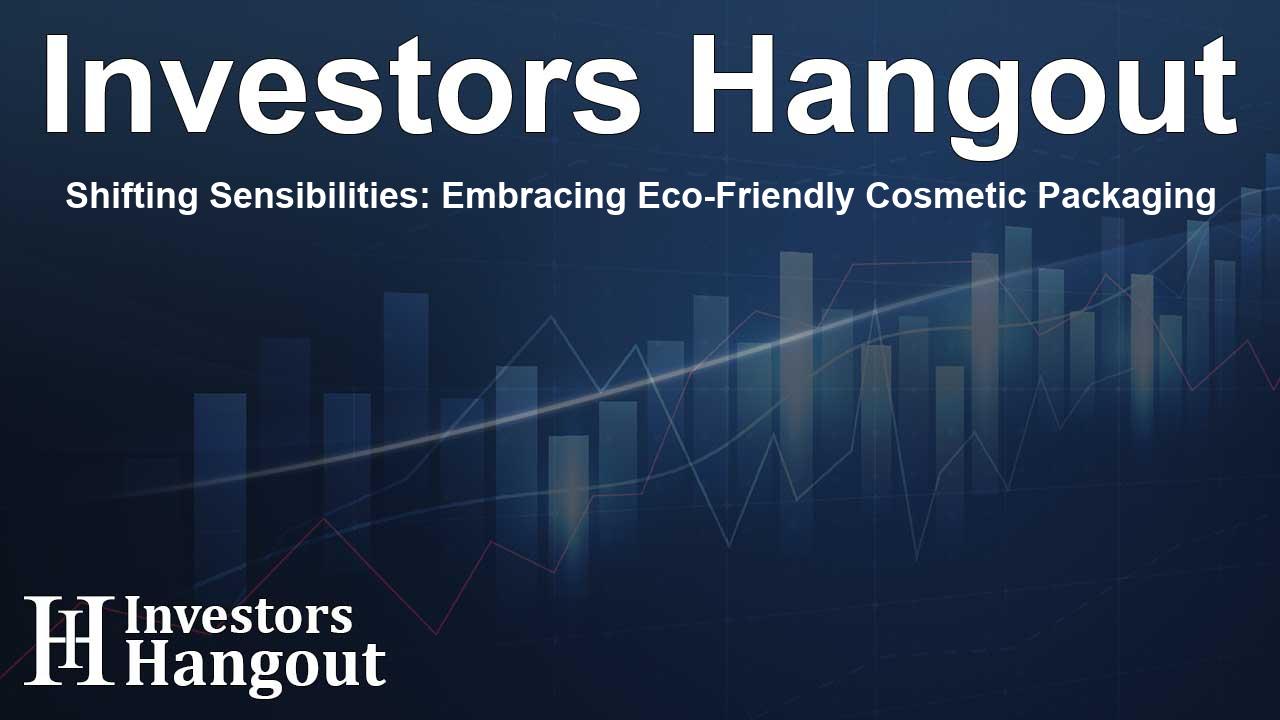Shifting Sensibilities: Embracing Eco-Friendly Cosmetic Packaging

The Rise of Plastic-Free Cosmetic Packaging
As the beauty industry transforms, the movement toward plastic-free cosmetic packaging is gaining momentum. Environmental awareness is reshaping consumer preferences, prompting brands to explore sustainable alternatives. This surge in green initiatives reflects a broader commitment to reducing plastic waste and enhancing product sustainability.
Understanding Plastic-Free Cosmetic Packaging
At its core, plastic-free cosmetic packaging involves utilizing alternative materials to replace traditional plastics that have long dominated the industry. Brands are actively searching for solutions that minimize environmental impact by adopting eco-friendly materials such as glass, metal, bamboo, and recycled paper. Moving away from plastic not only supports green initiatives but also resonates with consumers who prioritize sustainability.
Key Trends Influencing Plastic-Free Packaging
Growing Demand for Sustainable Materials
One of the most significant drivers of change is the increasing demand for sustainable materials. Companies are leveraging biodegradable options including materials like cornstarch and mushroom packaging. By choosing these alternatives, brands can join the movement toward environmental responsibility, appealing to a more eco-conscious consumer base.
Innovative Packaging Designs
Innovation is at the forefront of the plastic-free packaging trend. Brands are creating refillable containers, solid bars, and minimalist packaging designs that not only reduce waste but also enhance consumer convenience. These developments play a crucial role in shaping new consumer habits and encouraging sustainable practices.
Regulatory Pressure and Sustainability Initiatives
Various governments are implementing stringent regulations aimed at reducing single-use plastics. These regulations compel cosmetic companies to adapt packaging strategies that align with sustainability goals, driving the industry toward eco-friendly innovations.
The Potential for Growth in the Plastic-Free Market
The plastic-free packaging market is expected to see substantial growth, fueled by rising awareness and consumer demand for environmentally safe products. The clean beauty movement—focused on using natural ingredients and sustainable practices—amplifies this trend, pushing brands to enhance their eco-conscious image.
Challenges in Transitioning Away From Plastic
As promising as the outlook is, challenges remain. Brands face hurdles such as sourcing sustainable materials and ensuring compatibility with certain cosmetic formulations. Educating consumers about the benefits of using eco-friendly products and the importance of reducing plastic waste is also vital to overcoming these obstacles.
Regional Insights and Market Leaders
Regions such as Europe are leading the charge with strict regulations encouraging the adoption of plastic-free materials. Countries are not only crafting policies to limit plastic waste but are also fostering investments in green packaging technologies. European consumers' strong preference for sustainable beauty products further drives this trend, compelling brands to innovate.
North America's Market Growth
North America is experiencing significant growth as awareness surrounding sustainability and ethical beauty grows among consumers, especially younger generations. The U.S. and Canada are pushing for sustainable packaging innovations, with many brands actively adopting biodegradable and refillable solutions.
Conclusion
As the plastic-free cosmetic packaging market develops, the synergy of innovative designs and sustainable practices paints a promising picture. Brands that successfully adapt to this new landscape will not only foster consumer loyalty but also contribute to a healthier planet. Embracing this shift toward eco-friendly solutions is not merely a trend; it is a vital necessity for the future of the cosmetics industry.
Frequently Asked Questions
What is plastic-free cosmetic packaging?
Plastic-free cosmetic packaging refers to using alternative materials like glass, metal, and biodegradable materials instead of traditional plastics in beauty product packaging.
Why is there a growing demand for sustainable packaging?
Consumers are becoming increasingly aware of environmental issues, prompting a preference for products with minimal plastic waste and those that utilize sustainable materials.
What innovations are shaping plastic-free packaging?
Innovations like refillable containers, solid bars, and minimalist designs are key trends that enhance convenience while reducing waste.
How is regulatory pressure influencing the market?
Government regulations limiting single-use plastics are driving cosmetic brands to adopt more sustainable packaging solutions.
What are the main challenges in the transition to plastic-free packaging?
Challenges include sourcing sustainable materials, compatibility with certain formulations, and educating consumers about the benefits of eco-friendly options.
About The Author
Contact Lucas Young privately here. Or send an email with ATTN: Lucas Young as the subject to contact@investorshangout.com.
About Investors Hangout
Investors Hangout is a leading online stock forum for financial discussion and learning, offering a wide range of free tools and resources. It draws in traders of all levels, who exchange market knowledge, investigate trading tactics, and keep an eye on industry developments in real time. Featuring financial articles, stock message boards, quotes, charts, company profiles, and live news updates. Through cooperative learning and a wealth of informational resources, it helps users from novices creating their first portfolios to experts honing their techniques. Join Investors Hangout today: https://investorshangout.com/
The content of this article is based on factual, publicly available information and does not represent legal, financial, or investment advice. Investors Hangout does not offer financial advice, and the author is not a licensed financial advisor. Consult a qualified advisor before making any financial or investment decisions based on this article. This article should not be considered advice to purchase, sell, or hold any securities or other investments. If any of the material provided here is inaccurate, please contact us for corrections.
